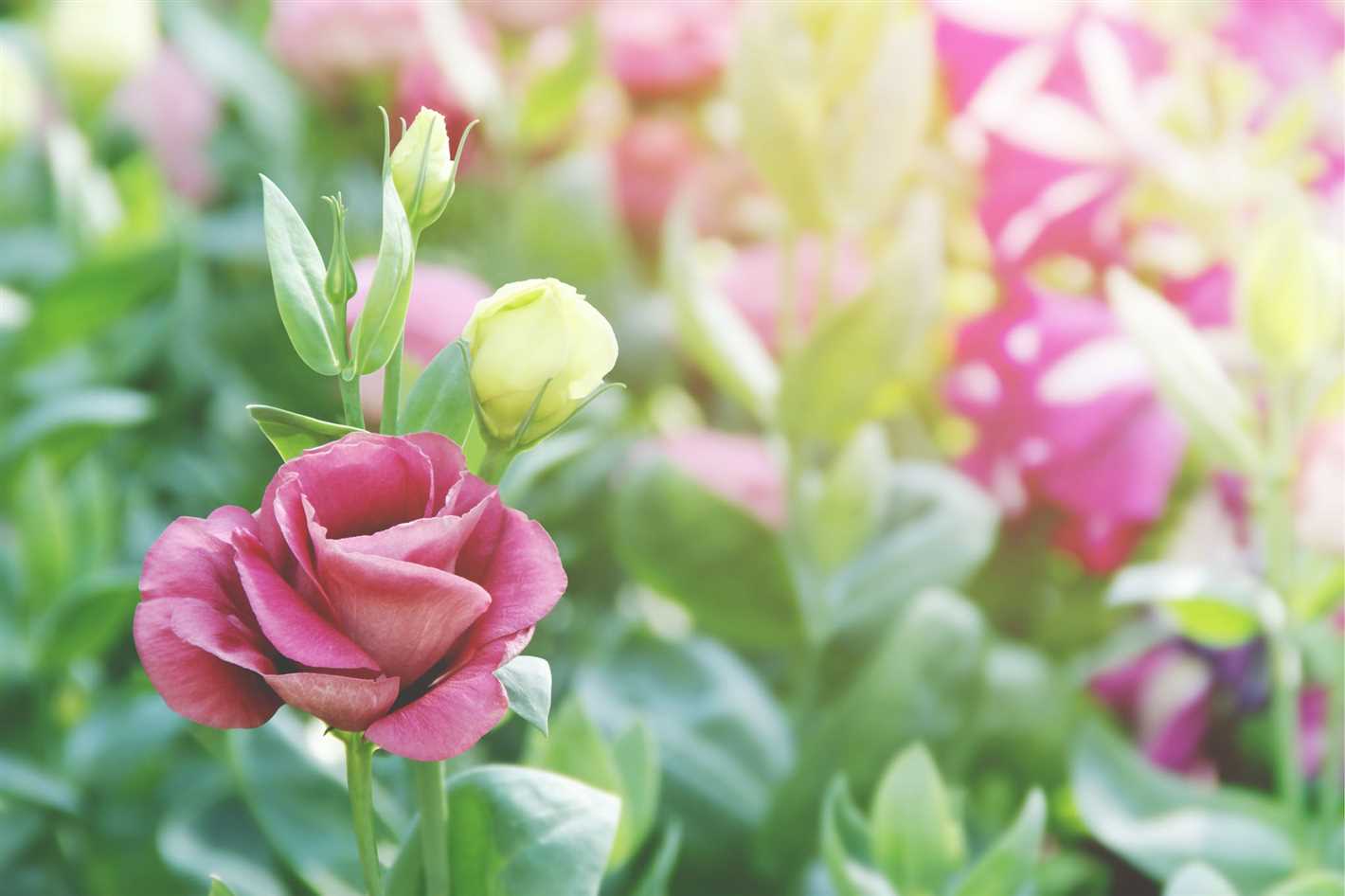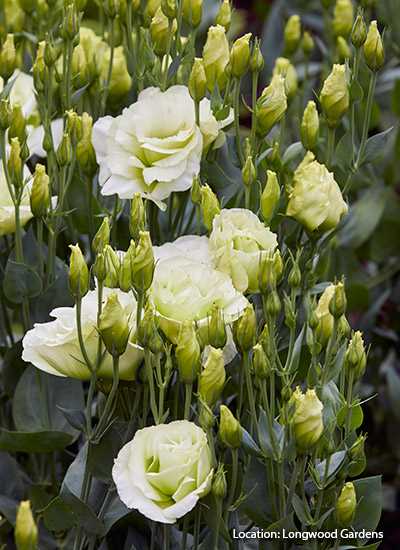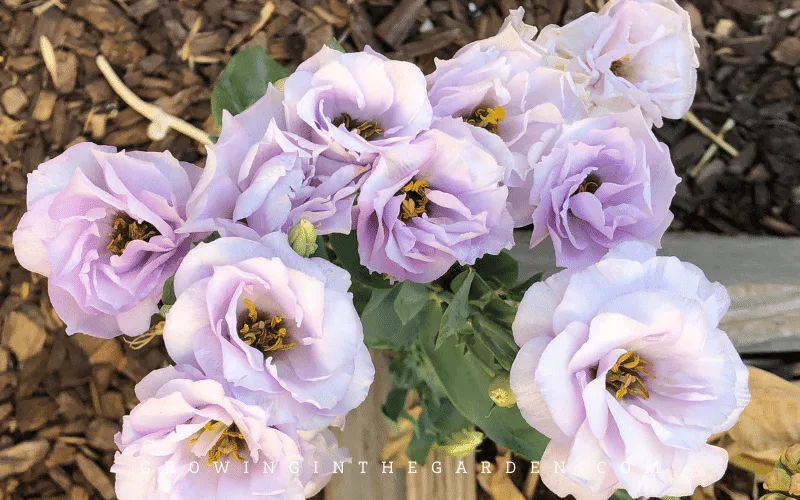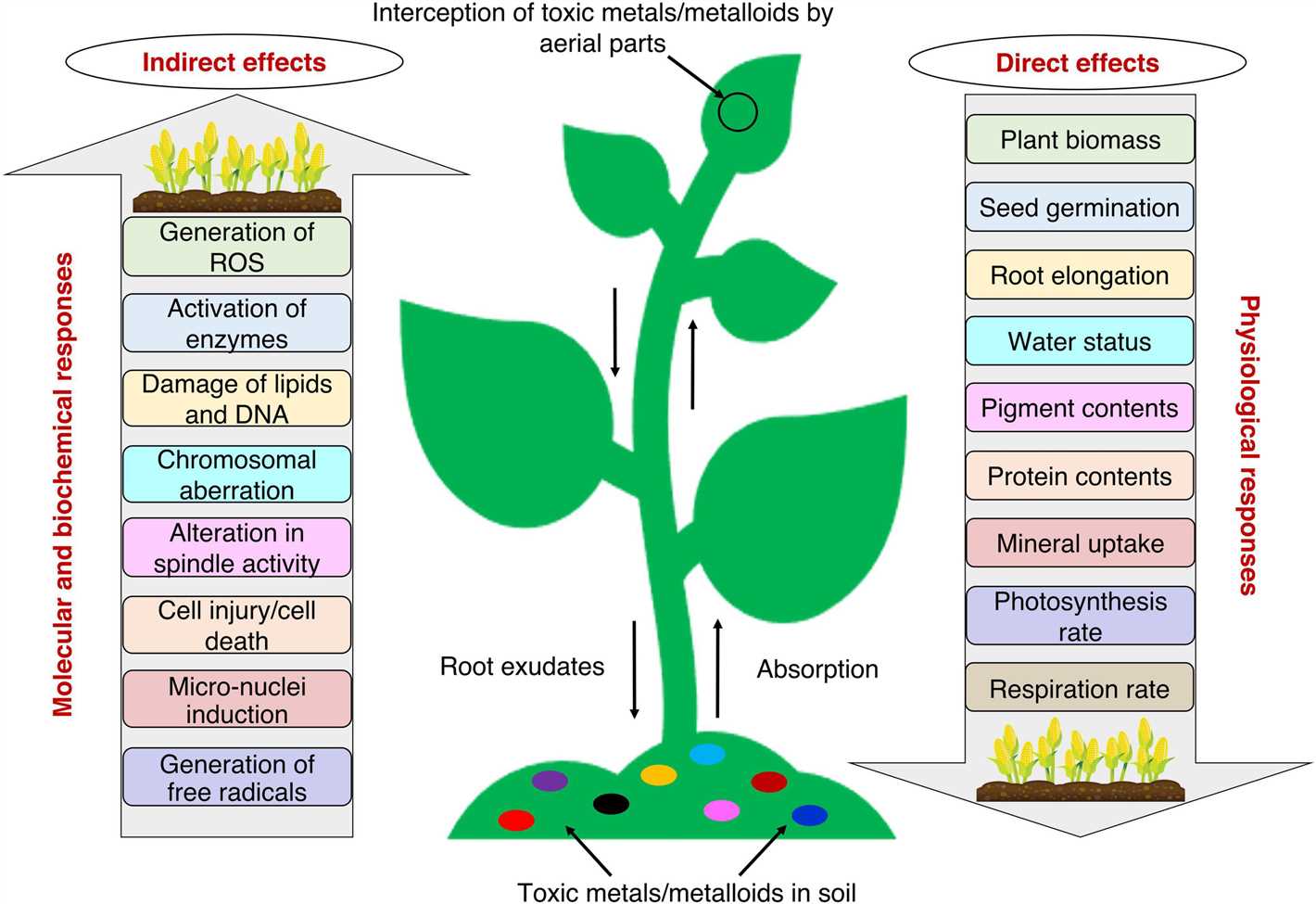- Eustoma Seedlings: Tips for Optimal Growth
- Ideal Planting Conditions
- Choosing the Right Soil
- Factors to Consider
- Preparing the Soil
- Soil Maintenance
- Watering Techniques for Healthy Seedlings
- Importance of Proper Lighting
- 1. Photosynthesis and Energy Production
- 2. Prevention of Leggy Growth
- 3. Flowering and Blooming
- 4. Artificial Lighting Options
- 5. Duration and Intensity of Light
- 6. Monitoring and Adjusting Lighting
- Pruning and Maintenance
- 1. Prune the top growth
- 2. Remove weak or damaged leaves
- 3. Pinch off the tips
- 4. Provide support
- 5. Regularly water and fertilize
- 6. Monitor for pests and diseases
- Fertilization for Robust Growth
- Choosing the Right Fertilizer
- Fertilization Schedule
- Application Method
- Preventing Common Pests and Diseases
- 1. Regular Inspection
- 2. Clean Growing Environment
- 3. Proper Watering
- 4. Natural Predators
- 5. Mulching
- 6. Disinfection
- 7. Proper Fertilization
- 8. Crop Rotation
- 9. Quarantine
- 10. Regular Monitoring
- Transplanting Eustoma Seedlings
- Questions and Answers:
- What are some tips for intensive development of Eustoma seedlings?
- How much light do Eustoma seedlings need?
- What is the ideal temperature for Eustoma seedlings?
- What kind of soil should be used for Eustoma seedlings?
- How often should Eustoma seedlings be watered?
- What are some common pests and diseases that can affect Eustoma seedlings?
- Videos: 30,000 Square Meters Of Real Flowers All Year Round! Flower Production Plant

Have you ever wanted to grow beautiful and vibrant eustoma flowers from seedlings? If so, then you’re in luck! In this article, we will provide you with some useful tips and advice from a florist on how to ensure the healthy and intensive development of your eustoma seedlings.
Eustoma, also known as Lisianthus or Texas Bluebell, is a popular flower choice among gardeners and florists due to its striking appearance and long-lasting blooms. However, growing eustoma from seedlings can be a challenging task, requiring proper care and attention.
One of the key factors in the successful development of eustoma seedlings is providing them with the right conditions for growth. Eustoma prefers a sunny location with well-drained soil. It’s also important to maintain a consistent temperature, around 20-25 degrees Celsius, for optimal growth.
In addition to the environmental factors, proper watering and fertilization are crucial for the intensive development of eustoma seedlings. It’s recommended to water the plants thoroughly, allowing the soil to dry slightly between waterings. Fertilizing with a balanced liquid fertilizer every two weeks will provide the necessary nutrients for healthy growth.
By following these tips from a florist, you can ensure that your eustoma seedlings grow into stunning and robust plants, ready to brighten up your garden or be used in floral arrangements. With proper care and attention, you’ll be able to enjoy the beauty of eustoma flowers for an extended period of time.
Eustoma Seedlings: Tips for Optimal Growth
Growing healthy Eustoma seedlings is crucial for the successful development of these beautiful flowers. Here are some tips to ensure optimal growth:
- Selecting the Right Seeds: Choose high-quality Eustoma seeds from a reputable supplier. Look for seeds that are fresh and viable.
- Choosing the Right Soil: Eustoma seedlings thrive in well-draining soil with a pH level of 6.0 to 7.0. Use a mix of well-composted soil, perlite, and vermiculite to create a suitable growing medium.
- Timing is Everything: Start sowing the seeds indoors 8 to 10 weeks before the last expected frost. This will give the seedlings plenty of time to develop before transplantation.
- Proper Lighting: Provide the seedlings with bright, indirect light for at least 12 to 14 hours a day. Consider using fluorescent grow lights if natural light is insufficient.
- Temperature and Humidity: Maintain a temperature of 70 to 75°F (21 to 24°C) during the day and 60 to 65°F (15 to 18°C) at night. Eustoma seedlings thrive in moderately humid conditions, so consider using a humidifier if necessary.
- Regular Watering: Water the seedlings regularly, keeping the soil moist but not waterlogged. Be careful not to overwater as excessive moisture can lead to root rot.
- Fertilizing: Start fertilizing the seedlings with a balanced liquid fertilizer once they have developed their first set of true leaves. Follow the instructions on the fertilizer packaging for proper dilution and application.
- Transplanting: When the seedlings have grown to a height of 3 to 4 inches (7 to 10 cm) and have developed several sets of true leaves, transplant them into individual pots or containers filled with the same soil mix used for germination.
- Hardening Off: About a week before planting them outdoors, gradually expose the seedlings to outdoor conditions to acclimate them to the environment. Start with a few hours of outdoor exposure and gradually increase the duration over the course of a week.
- Outdoor Planting: Choose a well-drained garden bed or containers with full sun exposure for planting the Eustoma seedlings. Space the plants according to the recommended spacing guidelines, usually around 8 to 12 inches (20 to 30 cm) apart.
Following these tips will give your Eustoma seedlings the best chance of developing into strong, healthy plants that will eventually bloom into stunning flowers.
Ideal Planting Conditions
- Temperature: Eustoma seedlings prefer warm temperatures between 65 to 75 degrees Fahrenheit (18 to 24 degrees Celsius). Avoid exposing the seedlings to extreme heat or cold, as it can hinder their growth.
- Light: Eustoma plants require full sun for at least six to eight hours a day. Place the seedlings in a location that receives adequate sunlight to ensure proper development.
- Soil: Use a well-draining soil mixture with a pH level between 6.0 and 6.5. The soil should be rich in organic matter and have good water retention capabilities.
- Watering: Provide consistent moisture to the Eustoma seedlings. Water them regularly, keeping the soil moist but not waterlogged. Avoid overwatering, as it can lead to root rot.
- Fertilizer: Use a balanced fertilizer with equal proportions of nitrogen, phosphorus, and potassium. Apply the fertilizer every two weeks during the growing season to promote healthy growth.
- Spacing: Allow enough space between the seedlings to ensure proper air circulation and prevent diseases. Space the plants at least 12 inches apart to allow them to grow freely.
Note: It is important to monitor the seedlings closely and make adjustments to the planting conditions as necessary. Regularly check for signs of pests or diseases and take appropriate measures to control them. With proper planting conditions and care, your Eustoma seedlings will thrive and reward you with beautiful blooms.
Choosing the Right Soil
Choosing the right soil is crucial for the successful development of Eustoma seedlings. The soil should provide adequate nutrition, drainage, and aeration to ensure healthy root growth.
Factors to Consider
When selecting soil for your Eustoma seedlings, consider the following factors:
- Texture: The soil should have a loamy texture, which means it should be a balanced combination of sand, silt, and clay. This texture allows for optimal water retention without becoming waterlogged.
- <strongpH Level: The pH level of the soil should be slightly acidic to neutral, around 6.0-7.0. This range provides an environment conducive to nutrient absorption.
- Drainage: The soil should have good drainage to prevent waterlogging, which can lead to root rot. Ensure that excess water can easily drain away from the roots.
- Nutrient Content: Eustoma seedlings require a soil mix that is rich in organic matter and nutrients. Look for soil that is labeled as a professional planting mix or use compost to enhance the nutrient content.
Preparing the Soil
Before planting your Eustoma seedlings, it is important to prepare the soil properly:
- Remove Weeds: Clear the planting area from any weeds or debris that can compete with the seedlings for nutrients and water.
- Loosen the Soil: Use a garden fork or a shovel to loosen the soil. This will improve aeration and facilitate root penetration.
- Amend the Soil: If the soil lacks organic matter or is of poor quality, adding compost or professional planting mix can greatly improve its fertility and nutrient content.
Soil Maintenance

To maintain the health of your Eustoma seedlings, keep the following tips in mind:
- Watering: Water the seedlings regularly, but avoid overwatering as it can lead to root diseases. Ensure that the soil remains consistently moist but not saturated.
- Fertilizing: As the seedlings grow, you can start incorporating a balanced liquid fertilizer into your watering routine to provide the necessary nutrients.
- Weed Control: Keep the planting area free of weeds to prevent competition for nutrients and space.
By choosing the right soil and providing proper maintenance, you can ensure that your Eustoma seedlings have the best conditions for intensive development and growth.
Watering Techniques for Healthy Seedlings
Proper watering techniques are essential for the healthy development of eustoma seedlings. Here are some tips to ensure your seedlings receive the right amount of water:
- Consistent watering: It’s important to water your seedlings consistently to prevent them from drying out or becoming waterlogged. Water the seedlings regularly, but avoid overwatering, as it can lead to root rot.
- Time of watering: Water your seedlings in the morning or early evening when the temperature is cooler. This allows the water to be absorbed by the roots before it evaporates.
- Watering at the base: Direct the water towards the base of the seedlings rather than spraying them from above. This helps to prevent the foliage from getting wet, which can lead to diseases.
- Drainage: Ensure that the pots or containers have proper drainage holes to allow excess water to escape. This helps prevent waterlogging and ensures the roots receive enough oxygen.
- Water quality: Use clean, non-chlorinated water for watering your seedlings. Chlorine can be harmful to the delicate roots of the seedlings.
- Moisture levels: Check the moisture levels of the soil regularly by inserting your finger into the soil up to the second knuckle. If it feels dry at the top, it’s time to water the seedlings.
Following these watering techniques will help promote healthy growth and development of your eustoma seedlings. Remember to adapt the watering schedule based on the specific needs of your seedlings and the surrounding environment.
Importance of Proper Lighting
Proper lighting plays a crucial role in the intensive development of eustoma seedlings. Light is one of the key factors that influences the growth and overall health of these delicate plants. By understanding the importance of proper lighting, you can provide the ideal conditions for their development.
1. Photosynthesis and Energy Production
Eustoma seedlings rely on light for photosynthesis, the process by which plants convert light energy into chemical energy. This energy fuels their growth and development. Without adequate light, the seedlings may struggle to produce enough energy to support healthy growth.
2. Prevention of Leggy Growth
Insufficient light can lead to leggy growth in eustoma seedlings. Leggy growth refers to long, weak stems and sparse foliage. This is because the seedlings will stretch towards a light source in an attempt to maximize their light intake. By providing proper lighting, you can prevent leggy growth and promote compact, sturdy plants.
3. Flowering and Blooming
Proper lighting is crucial for triggering the flowering and blooming phase in eustomas. These plants require a certain amount of light exposure to initiate flower development. Insufficient light can result in delayed or reduced blooming, impacting the overall beauty and quality of the flowers produced.
4. Artificial Lighting Options
If natural light is limited or not sufficient, artificial lighting options can be used to supplement the light requirements of eustoma seedlings. Full-spectrum fluorescent lights or LED grow lights can provide the necessary light intensity and color spectrum for optimal growth. However, it is important to position the lights appropriately to ensure uniform light distribution and prevent heat damage to the seedlings.
5. Duration and Intensity of Light
The duration and intensity of light are both important factors to consider when providing lighting for eustoma seedlings. Typically, seedlings should receive 12-16 hours of light per day. A consistent light intensity of 300-400 µmol/m²/s is recommended for healthy growth. It is also beneficial to provide a rest period of darkness to allow the plants to recover and avoid stress.
6. Monitoring and Adjusting Lighting
Regular monitoring of the lighting conditions is essential to ensure the best possible growth for eustoma seedlings. Pay attention to the overall brightness, color temperature, and distance between the light source and the plants. Adjust the lighting setup as needed to maintain optimal conditions and provide the right amount of light throughout the seedlings’ growth stages.
By understanding the importance of proper lighting for eustoma seedlings, you can enhance their development, promote healthy growth, and enjoy beautiful blooms. Ensure a well-lit environment for these delicate plants, and you’ll be rewarded with stunning flowers in return.
Pruning and Maintenance
Pruning is an important step in the maintenance of eustoma seedlings. It helps to promote healthy growth and shape the plants for a beautiful display. Here are some tips on pruning and maintenance for eustoma seedlings:
1. Prune the top growth
When the eustoma seedlings reach a height of about 6 inches, it is a good time to prune the top growth. This helps to encourage bushier growth and more blooms. Use clean, sharp pruning shears to carefully cut back the top of the plant, taking care not to damage the stem or leaves.
2. Remove weak or damaged leaves
Inspect the eustoma seedlings regularly for weak or damaged leaves. These leaves can restrict airflow and provide a breeding ground for pests or diseases. Gently remove any affected leaves by pinching them off at the base of the stem.
3. Pinch off the tips
To promote branching and fuller growth, pinch off the tips of the eustoma seedlings. This can be done when the seedlings are about 4-6 inches tall. Simply use your fingers or clean scissors to pinch or cut off the top portion of the main stem.
4. Provide support

Eustoma seedlings can sometimes become top-heavy as they grow. To prevent them from breaking or bending, provide support with stakes or plant cages. Carefully tie the stems to the support structure using soft plant ties or twine.
5. Regularly water and fertilize
Proper watering and fertilization are essential for the healthy development of eustoma seedlings. Water the plants regularly, keeping the soil evenly moist but not waterlogged. Fertilize every two weeks with a balanced liquid fertilizer, following the package instructions for dilution rates.
6. Monitor for pests and diseases
Keep a close eye on the eustoma seedlings for any signs of pests or diseases. Common pests that can affect eustoma include aphids, thrips, and spider mites. If necessary, use organic or chemical controls to manage these pests. If any diseases are detected, such as powdery mildew, treat with appropriate fungicides.
By following these pruning and maintenance tips, you can help ensure the intensive development and healthy growth of your eustoma seedlings.
Fertilization for Robust Growth
Proper fertilization is essential for the robust growth of eustoma seedlings. By providing them with the right nutrients, you can ensure that they develop strong roots and healthy foliage.
Choosing the Right Fertilizer

When it comes to fertilizing eustoma seedlings, it’s important to choose the right type of fertilizer. Look for a balanced fertilizer that contains equal amounts of nitrogen (N), phosphorus (P), and potassium (K). This will provide the seedlings with the necessary nutrients for healthy growth.
Alternatively, you can opt for a slow-release fertilizer that gradually releases nutrients over time. This can be beneficial for long-term fertilization, as it reduces the risk of over-fertilizing the seedlings.
Fertilization Schedule
It’s important to follow a fertilization schedule to ensure that eustoma seedlings receive consistent nutrients. Here is a recommended fertilization schedule:
- Fertilize the seedlings once every two weeks during the first six to eight weeks of growth.
- After the initial growth period, reduce the frequency of fertilization to once every four to six weeks.
- If you notice any signs of nutrient deficiency, such as yellowing leaves or stunted growth, increase the frequency of fertilization.
Remember to always follow the instructions on the fertilizer package and adjust the dosage according to the size and age of your seedlings.
Application Method
When applying fertilizer to eustoma seedlings, it’s important to do so evenly and avoid over-fertilizing. Here are some tips for applying fertilizer:
- Use a small, handheld spreader or a spoon to evenly distribute the fertilizer around the base of each seedling.
- Avoid getting the fertilizer on the foliage or stems of the seedlings, as this can lead to burning.
- Water the seedlings immediately after fertilizing to help them absorb the nutrients.
By following these tips for fertilization, you can promote the robust growth of your eustoma seedlings and ensure that they develop into healthy and beautiful plants.
Preventing Common Pests and Diseases
1. Regular Inspection
One of the most effective ways to prevent pests and diseases in eustoma seedlings is to regularly inspect them. Check the leaves, stems, and flowers for any signs of pests or diseases such as discoloration, spots, or wilting. Early detection can help prevent the spread and minimize damage.
2. Clean Growing Environment
Maintaining a clean growing environment is crucial in preventing pests and diseases. Remove any dead or decaying plant material, weeds, or debris that can harbor pests or provide a breeding ground for diseases. Keep the area around the seedlings clean and ensure good air circulation to discourage the growth of fungi and other pathogens.
3. Proper Watering
Proper watering is essential to prevent both pests and diseases. Overwatering can lead to root rot and create a favorable environment for fungal diseases, while underwatering can weaken the plants and make them more susceptible to pests. Water the eustoma seedlings at the base, avoiding wetting the leaves, and ensure the soil is well-drained.
4. Natural Predators
Encouraging natural predators in the growing area can help control pests organically. Ladybugs, lacewings, and parasitic wasps are beneficial insects that feed on aphids, mites, and other common pests. Planting companion plants such as marigold and dill can attract these beneficial insects and create a more balanced ecosystem.
5. Mulching
Applying a layer of organic mulch around the eustoma seedlings can help prevent weeds, regulate soil temperature, and retain moisture. Mulch also acts as a barrier against soil-borne diseases by reducing the spread of fungal spores. Use straw, wood chips, or compost as mulch, and ensure it does not directly touch the stems of the seedlings.
6. Disinfection
Disinfecting tools and containers before and after use is crucial in preventing the transmission of diseases. Clean pruning shears, pots, and other gardening tools with a disinfecting solution or rubbing alcohol to kill any pathogens that may be present. This practice helps reduce the risk of spreading diseases from one plant to another.
7. Proper Fertilization
Providing the eustoma seedlings with proper nutrition through fertilization can help strengthen their resistance to pests and diseases. Use a balanced fertilizer that provides essential nutrients in the right proportions. Avoid over-fertilization, as it can lead to excessive growth and make the plants more prone to pests and diseases.
8. Crop Rotation
Practicing crop rotation is beneficial in preventing the buildup of pests and diseases in the soil. Avoid planting eustoma seedlings in the same location year after year, as this can lead to the accumulation of soil-borne pathogens. Rotate the planting areas and include different plant families in the rotation to break the pest and disease cycles.
9. Quarantine

If you notice any signs of pests or diseases in your eustoma seedlings, isolate the affected plants immediately to prevent the spread to healthy plants. Quarantine the affected plants in a separate area until you can treat or dispose of them properly. This helps contain the problem and protect your other plants.
10. Regular Monitoring
Continuously monitor the eustoma seedlings for any changes or new signs of pests and diseases. Early detection and swift actions can significantly reduce the impact of pests and diseases on the plants. Stay vigilant and address any issues promptly to ensure the healthy development of the seedlings.
Transplanting Eustoma Seedlings
Transplanting eustoma seedlings is an important step in their development and ensuring their continued growth. Here are some tips to help you successfully transplant your eustoma seedlings:
- Timing: Transplant your eustoma seedlings when they have developed their first true leaves, usually around 4-6 weeks after sowing. This will give them enough time to establish a strong root system.
- Prepare the soil: Choose a well-draining soil mix for transplanting. Eustoma prefer slightly acidic soil with a pH of around 6-6.5. Adding organic matter, such as compost, will help improve soil fertility and drainage.
- Pre-soak the soil: Before transplanting, water the soil thoroughly to ensure it is moist but not waterlogged. This will help the roots settle in after transplanting.
- Transplanting process: Gently lift the eustoma seedlings from the seed tray, taking care not to damage the delicate roots. Create holes in the prepared soil that are large enough to accommodate the root ball of each seedling. Place the seedlings in the holes and gently firm the soil around them, making sure to cover the roots completely.
- Spacing: Space the eustoma seedlings at least 8-12 inches apart to allow for air circulation and room for growth. Crowding the seedlings can lead to problems such as disease and stunted growth.
- Watering: After transplanting, water the seedlings thoroughly to help them settle in and establish their roots. Keep the soil evenly moist, but be careful not to overwater as this can cause root rot.
- Provide support: Eustoma seedlings may require support as they grow taller. Inserting stakes or using plant supports can help prevent them from flopping over.
Following these transplanting tips will help ensure the successful development of your eustoma seedlings. With proper care and attention, your eustoma plants will thrive and reward you with beautiful blooms.
Questions and Answers:
What are some tips for intensive development of Eustoma seedlings?
Some tips for intensive development of Eustoma seedlings include providing them with sufficient light, maintaining the right temperature and humidity levels, and using a well-draining and nutrient-rich soil mixture. It is also important to provide regular watering and fertilization, and to protect the seedlings from pests and diseases.
How much light do Eustoma seedlings need?
Eustoma seedlings need plenty of light, at least 12-16 hours a day. They should be placed in a location where they can receive direct sunlight or be supplemented with artificial grow lights. Lack of sufficient light can result in leggy and weak seedlings.
What is the ideal temperature for Eustoma seedlings?
The ideal temperature for Eustoma seedlings is around 65-75°F (18-24°C) during the day and 55-65°F (13-18°C) at night. It is important to avoid extreme temperature fluctuations, as it can hinder their growth and development.
What kind of soil should be used for Eustoma seedlings?
For Eustoma seedlings, it is best to use a well-draining soil mixture that is rich in organic matter. A mixture of peat moss, perlite, and vermiculite can be a good option. This type of soil provides good aeration and helps prevent waterlogging, which can lead to root rot.
How often should Eustoma seedlings be watered?
Eustoma seedlings should be watered regularly, keeping the soil consistently moist but not waterlogged. It is best to water them when the top inch of soil feels dry to the touch. Avoid overwatering, as it can cause root rot.
What are some common pests and diseases that can affect Eustoma seedlings?
Some common pests and diseases that can affect Eustoma seedlings include aphids, thrips, spider mites, powdery mildew, and damping-off disease. Regular inspection and early intervention, such as using organic insecticides or fungicides, can help prevent or control these issues.







